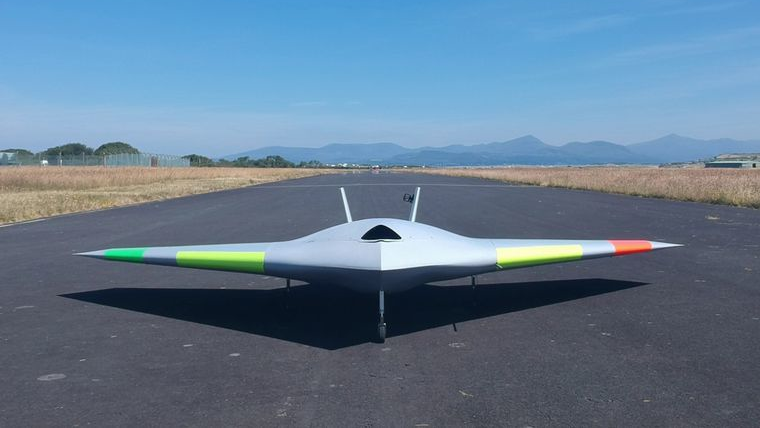
ARLINGTON, Va. – U.S. military researchers needed a company to push the bounds of future electric aircraft by eliminating control surfaces like ailerons, rudders, and flaps. They found their solution from Aurora Flight Sciences Corp. in Manassas, Va.
Officials of the U.S. Defense Advanced Research Projects Agency (DARPA) in Arlington, Va., announced a $7.1 million contract to Aurora on Friday for the Control of Revolutionary Aircraft with Novel Effectors (CRANE) project.
Instead of using ailerons, rudders, and flaps for control surfaces on future electric aircraft, the CRANE project seeks to use actuators or effectors to add energy or momentum to the flow of air over the aircraft.
Aurora engineers will seek to inject a disruptive technology early in aircraft design with new flow-control technologies and design tools. The idea is to configure and optimize an aircraft with active flow control to enhance efficiency and effectiveness of new commercial and military aircraft.
Passive control involves geometrical modifications like vortex generators on an aircraft wing for flow separation control, or chevrons on an exhaust nozzle of an aircraft to mitigate noise. Passive control devices always are on, no matter the need or performance penalty.
Active flow control, on the other hand, involves energy or momentum addition to the flow in a regulated manner. It is more desirable than passive control because aircraft pilots can turn it on or off as necessary.
Active flow control alters the aircraft's aerodynamic flow field through mechanical actuators, or by ejection or suction on a wing, fuselage, inlet, or nozzle.
Effectors and actuators typically are the enabling technologies of active flow control, yet have been the weakest link in developing active flow-control technology. Despite their relatively high costs, effectors and actuators typically are light weight, have no moving parts, and are energy-efficient.
Related: Virtual prototyping is revolutionizing aircraft system design
DARPA officials say they would like Aurora experts to demonstrate new active flow control on an X-plane, yet are encouraging the company to focus on the best ways to develop and flight demonstrate their flow-control technologies on a clean-sheet design or modification of an existing aircraft. DARPA expects Aurora to make substantial use of off-the-shelf components, especially for items unrelated to the active flow control subsystems.
The CRANE project excludes large external moving surfaces like ailerons, rudders, flaps, elevators, and trim surfaces; mechanical vectoring of engine jet exhaust, or other traditional moving aerodynamic control devices.
CRANE's goal is to demonstrate in flight that active flow-control actuator technologies can maintain flight safely, and provide quantifiable aircraft capabilities.
Related: Lockheed Martin laser weapons work tackling the problem of atmospheric turbulence
The program is a four-phase developmental cycle with each phase building on the previous phase. Phase 0 focuses on the design process and maturing understanding through configuration agnostic-designs, geometric and technology trade studies, and process documentation.
Phase 1 will validate analytical predictions, control loop analyses, and modeling verification. Phase 2 would test integrated subsystem component, and phase 3 would include fabrication, assembly, ground test, and flight demonstration.
On this contract Aurora will do the work in Manassas, Va.; Tucson, Ariz.; St. Louis; and Los Angeles, and should be finished by June 2021. For more information contact Aurora Flight Sciences online at www.aurora.aero, or DARPA at www.darpa.mil.
"flow" - Google News
June 24, 2020 at 02:37PM
https://ift.tt/3evlKyX
active flow control electric aircraft aerodynamic - Military & Aerospace Electronics
"flow" - Google News
https://ift.tt/2Sw6Z5O
https://ift.tt/2zNW3tO
Bagikan Berita Ini














0 Response to "active flow control electric aircraft aerodynamic - Military & Aerospace Electronics"
Post a Comment